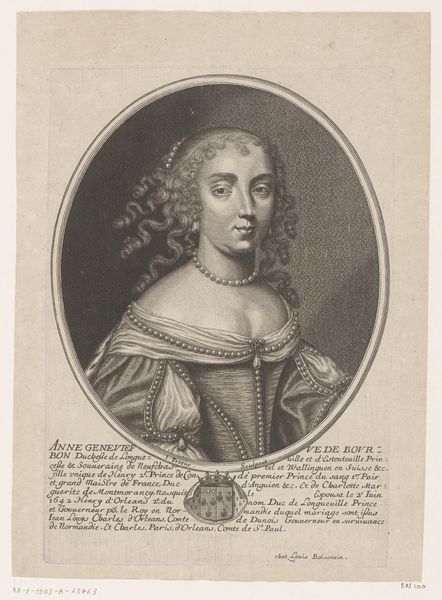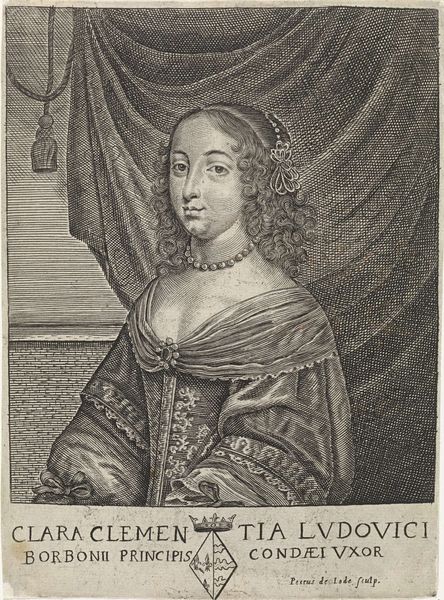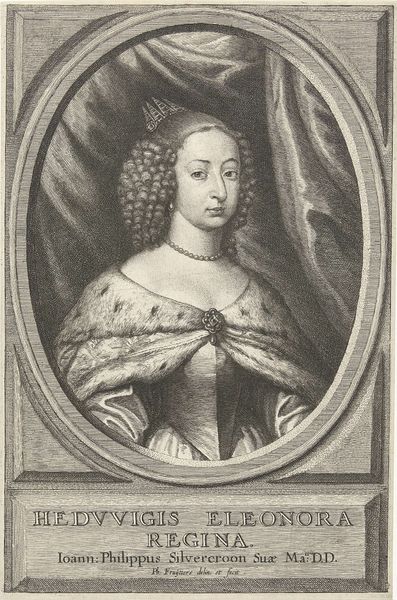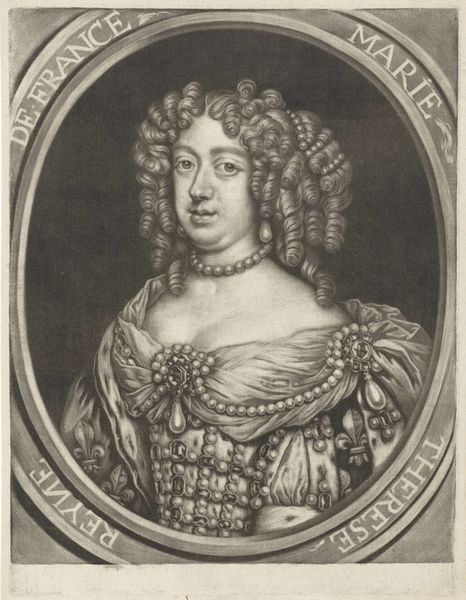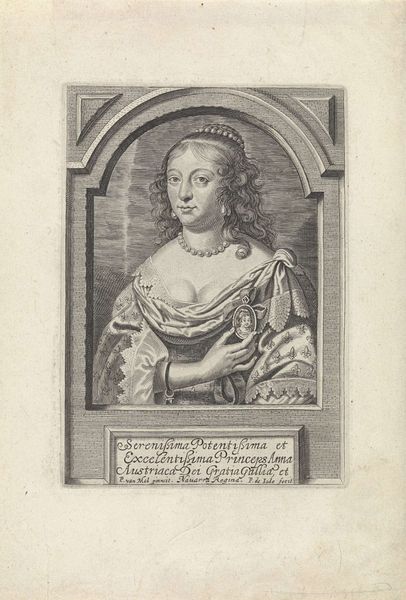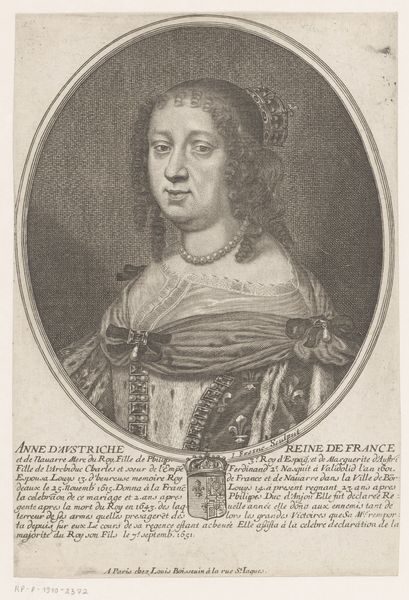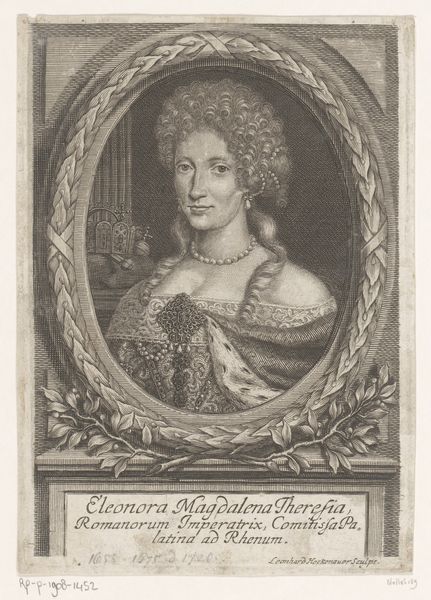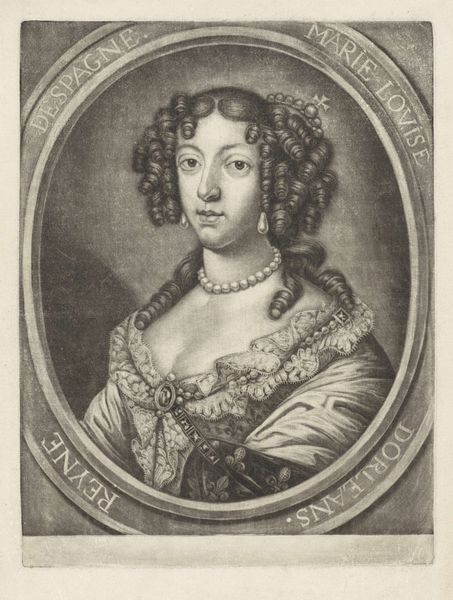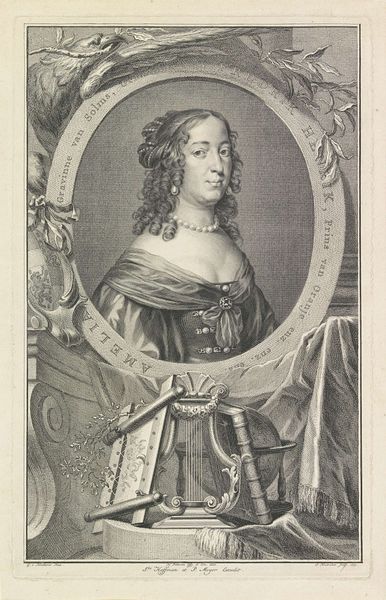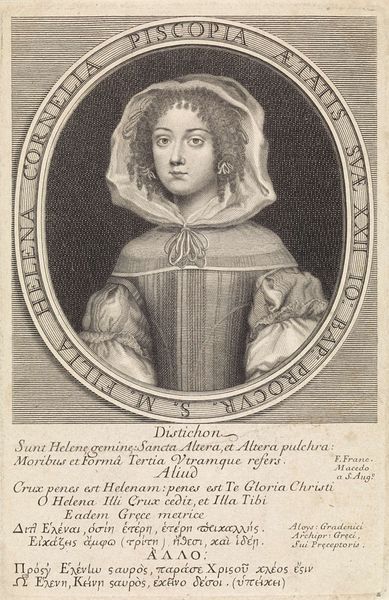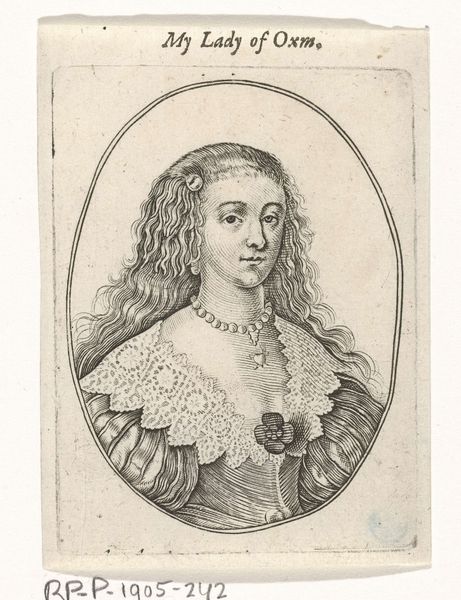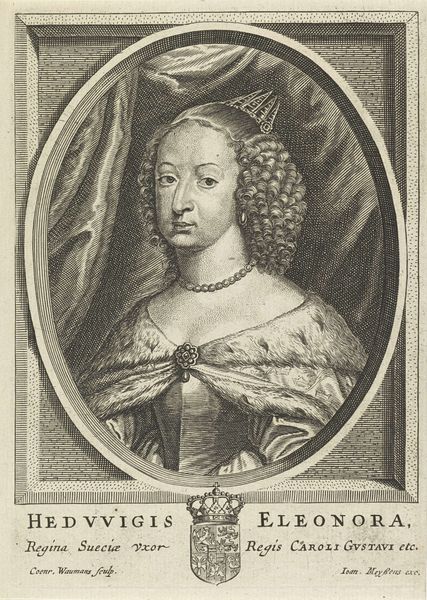
Portret van Maria Anna van Oostenrijk, koningin van Spanje 1628 - 1670
0:00
0:00
print, engraving
#
portrait
#
baroque
# print
#
old engraving style
#
history-painting
#
engraving
Dimensions: height 172 mm, width 129 mm
Copyright: Rijks Museum: Open Domain
This is Pieter de Jode the Younger's portrait of Maria Anna of Austria, Queen of Spain, created as an engraving sometime in the 17th century. The queen’s figure is defined by a dense network of fine, precise lines. Look closely at how de Jode varies the density and direction of these lines to model her face, her elaborate costume, and the dramatic folds of the background curtain. The engraving is not just a visual representation; it's a semiotic system. Notice how de Jode uses different textural techniques to differentiate surfaces, like the contrast between the smooth skin of the face and the intricate lace collar. Observe how the textures and patterns create a complex visual rhythm, guiding the eye across the surface. The composition reinforces her status through heraldic emblems and formal framing. These elements contribute to a discourse on power, representation, and the role of portraiture in constructing identity. The queen becomes less a person and more a sign.
Comments
No comments
Be the first to comment and join the conversation on the ultimate creative platform.
